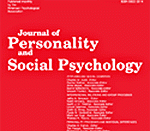Executive Women: Substance Plus Style
The article 'Executive Women: Substance Plus Style' deals with the issue of whether the 'abilities and attitudes of male managers are different from those of female managers' and that these differences have been used to keep women out of managerial positions. Furthermore, it suggests that it has now become 'fashionable' to state that these differences are favorable and complement the business environment. Lastly, the article focused on several strategies that women should follow in order to succeed as a middle or upper level manager within a large corporation.
The authors refute the notion that the differences between male and female managers are great. They mention that 'the few studies that have looked at women and men in comparable managerial roles have discovered more similarities than differences across sexes' (Catalyst, 1986). A test bank from 'thousands of managers and professionals in management development programs from 1978 to 1986' was cited as another reason why they believe there are few differences between male and female executives.
The tests revealed that executive men and women scored equally on most areas and that executive women are just as capable at leading, influencing, and motivating groups, as well as analyzing problems. The authors go on to show that, despite these similarities, women are disproportionately represented in the ranks of Fortune 500 company executives.
Repeated references are made to studies that were conducted with 22 people, 16 men and 6 women, whose job is to select executives for top jobs. These people are continually referred to as 'savvy insiders' throughout the article. These so called savvy insiders were tasked with providing an example of what they considered to be a woman who 'made it' and one who 'derailed'. They describe what basically amounts to a woman who utilizes characteristics of both...


